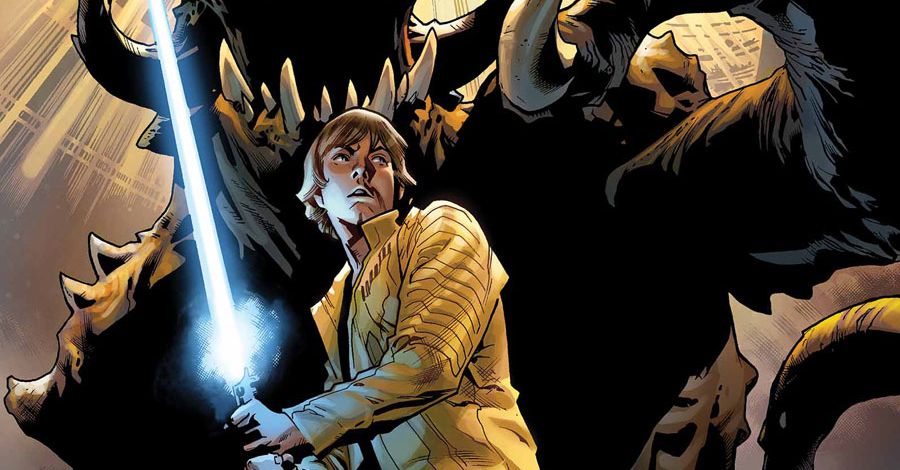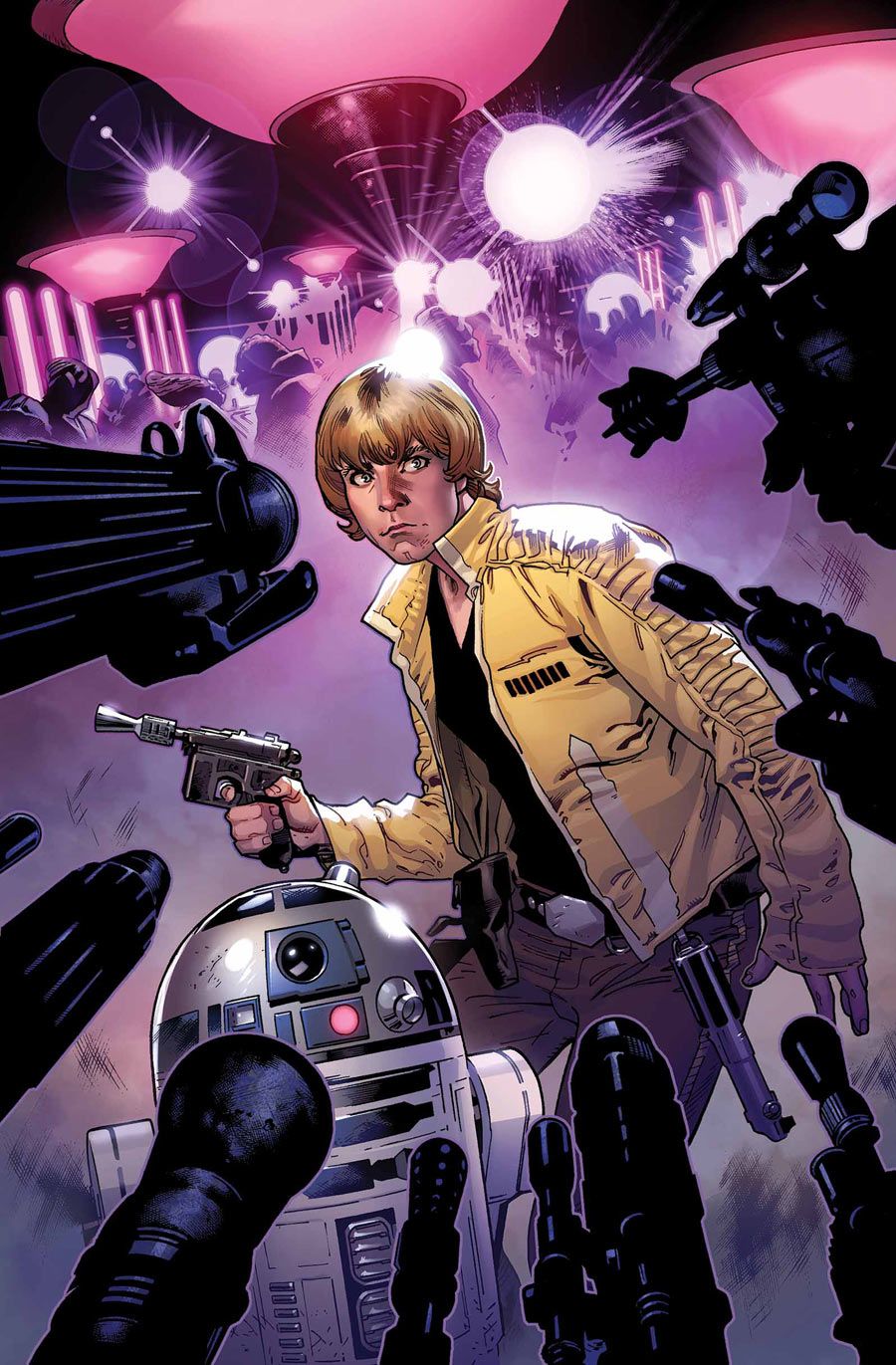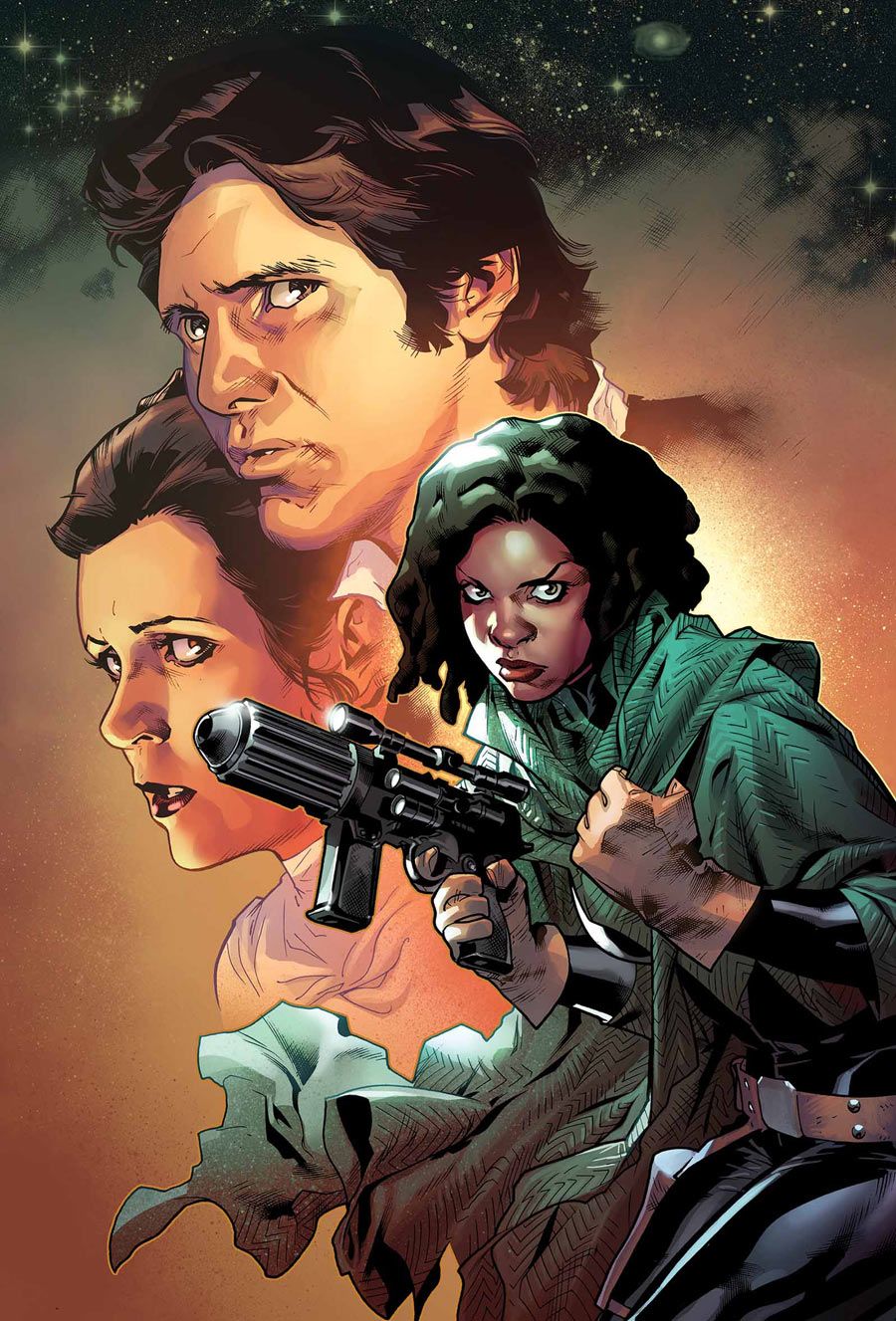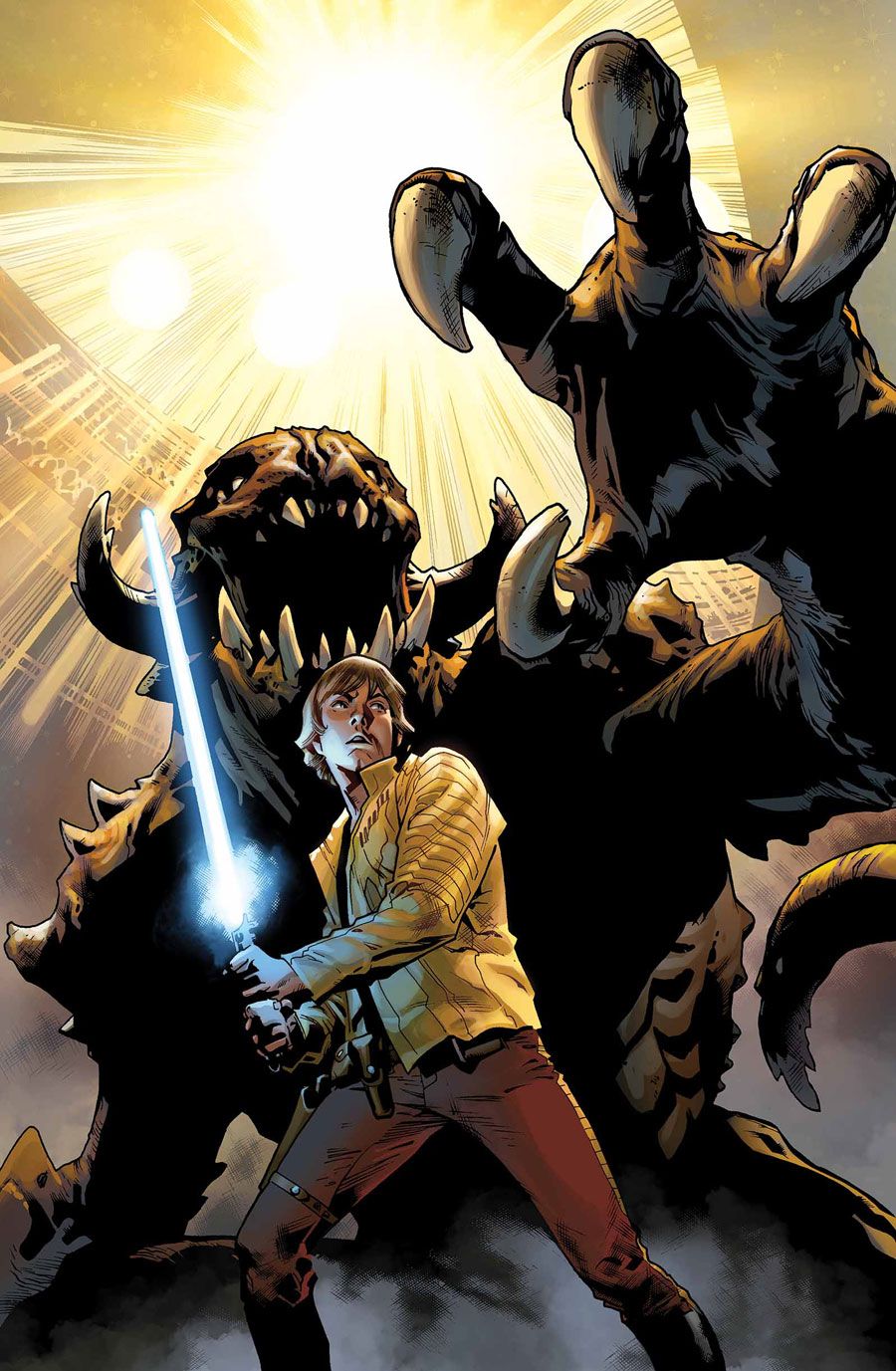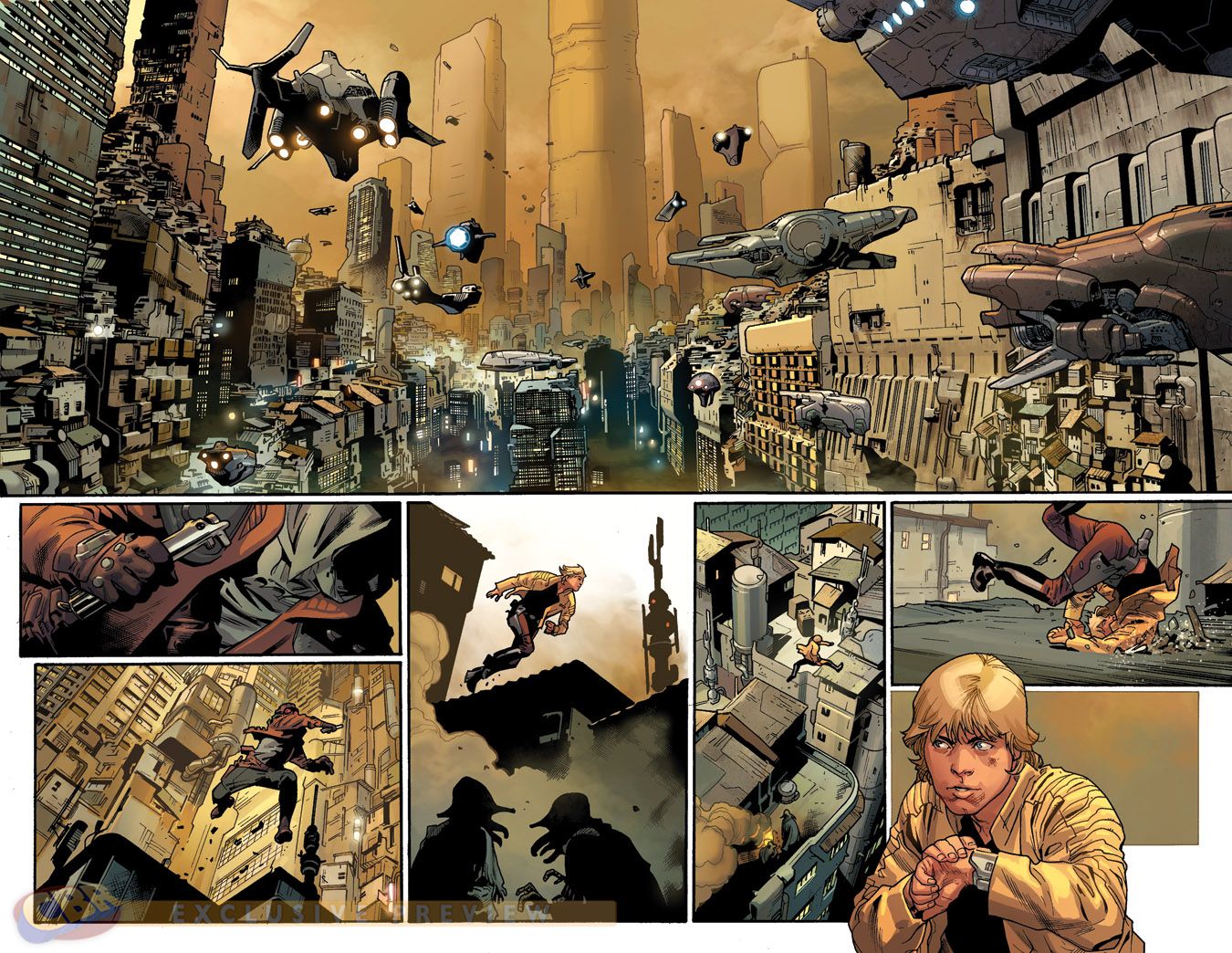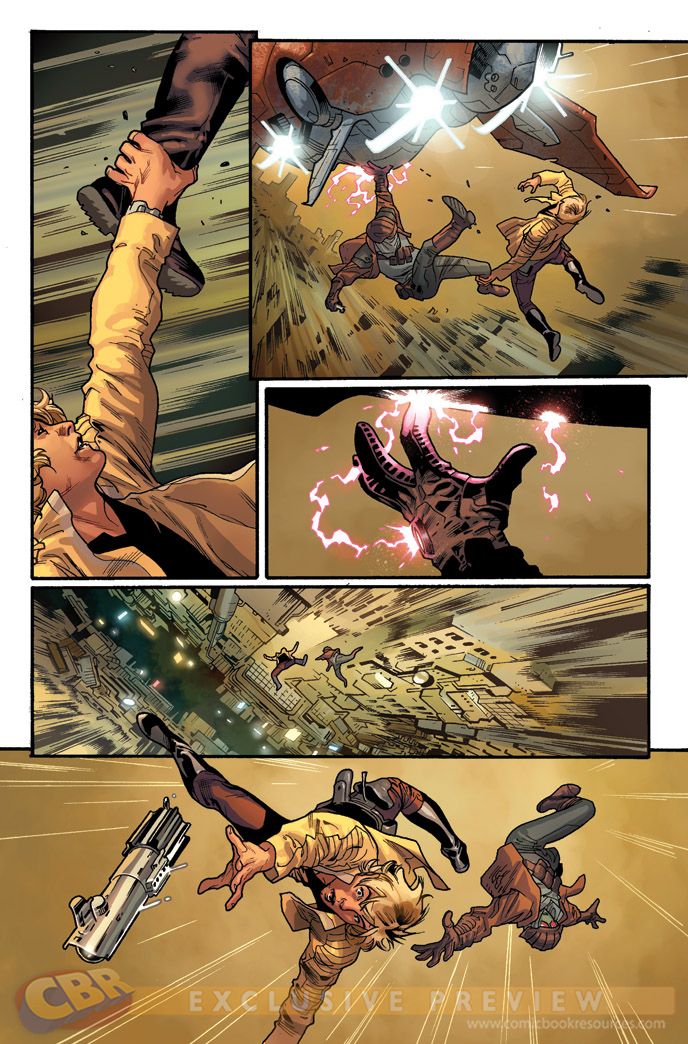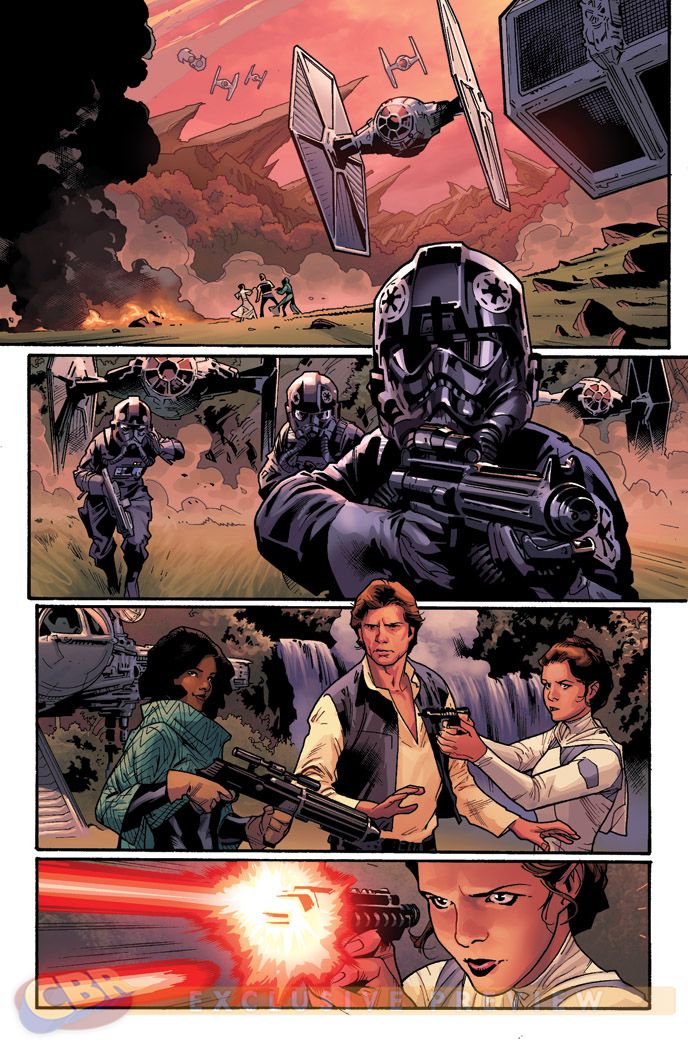When "Star Wars" #1 was released in 1977, Marvel Comics launched the best-selling series with a top-tier creative team -- namely Roy Thomas and Howard Chaykin. Fast forward 38 years and the publisher once again stacked the deck for a new "Star Wars" #1, this time with writer Jason Aaron and artist John Cassaday embarking on the "greatest space adventure of all time."
When news broke that Cassaday was leaving the interstellar series after the first arc, readers and retailers alike felt a great disturbance -- but Marvel punched it Chewie-style and added another industry superstar to the creative team: Stuart Immonen.
REVIEW: Aaron & Immonen Are at the Top of Their Game in "Star Wars" #8
"Star Wars" #8, which continues the saga set between "A New Hope" and "The Empire Strikes Back," featured Immonen's debut as the series' new regular artist. The celebrated Canadian artist delivered a first issue that would have forced even the hardened Grand Moff Tarkin to crack a smile. CBR News connected with Immonen to discuss his latest high-profile gig -- following epic runs illustrating "All-New X-Men" and "All-New Captain America". The multiple Joe Shuster Award winner shared insight into his process, which includes reteaming with inker Wade Von Grawbadger and colorist Justin Ponsor, as well as his love for the franchise. He even teased when readers can expect to see his take on Darth Vader.
CBR News: I have discussed with both Jason Aaron and "Darth Vader" writer Kieron Gillen in the past about making Star Wars comics and both said that they're not trying to write adaptations of the movies but tell stories that feel like Star Wars. In terms of illustrating the series, would you say the same thing -- that you want the book to feel like Star Wars versus recreating photorealistic interpretations of the iconic characters, ships and settings?
Stuart Immonen: It's a good question and one that I'm not sure I have a simple answer for. On one hand, I don't know if I have a photorealistic comic in me. "Superman: Secret Identity" came close, but on that project I did full art including colors and it took almost twice as long as a typical job. On the other hand, I enjoy collaborating, obviously with Wade [Von Grawbadger], but also with fellow "Ultimate Spider-Man" alumnus Justin Ponsor, each bringing his own artistry and flair and character interpretation to the table. But I wouldn't say that we are deliberately choosing one approach or the other. There's the opportunity to step away from a verbatim rehash of what we've seen in the films, but also opportunities in close-up panels or big double-page spreads for example to relish the detail and try to get as on-model as possible.
We're only one issue into you run but I already love your Princess Leia. Can you talk about your approach with her and what elements of her are Carrie Fisher and which ones are pure Stuart Immonen?
The likenesses of the three principal actors, especially from the era of the first film, are very, very tough to capture -- at least for me, but I've read things that make me feel less alone in that regard -- and Carrie Fisher is probably the hardest. So while I'm pleased to hear that people like the interpretation, it's one that I am still struggling to express satisfactorily.
Kathryn & Stuart Immonen Discuss the Beautiful, Heartbreaking "Russian Olive to Red King"
Ask the average person what Princess Leia looks like, and they will probably say she has cinnamon bun hair and a white dress, but her individual features -- her eyes and mouth and jaw -- are so subtle, especially at 19 years old, and they mostly evade me. I keep trying. Wade told me the other day that he thought the Leia likeness was getting better. [Laughs]
Wow. I am excited to see something better because "Star Wars" #8 was rock solid. Obviously Leia's scenes with Han in the issue are complete with dialogue, but you also brought emotion to the scene visually. I can hear them sniping back and forth like they're back in Echo Base on Hoth. Have you watched and rewatched the movies to channel the interactions and spirit of the characters?
I make it a point to work on characters' body language, mostly as a way to ensure a story can be "read," even without dialogue. For years I had a reputation as the "quiet" artist, someone who could do mundane talking heads scenes well, but lacked in action sequences, and that's very likely true. There are very few ways to punch someone but hundreds of ways to say "I love you," and I've probably always been more interested in the latter. So, I've had more than a quarter-century of professional practice in studying and interpreting the way people act and react in a given situation. Drawing a comic involves wearing a lot of hats similar to those in film: set designer, prop master, costumer, lighting designer, but mostly actor. As a result, I probably rely more on my own acting instincts than trying to figure out what Princess Leia would do. I'm drawing primarily in direct response to the script. If Jason [Aaron] writes Leia kicking Han in the pants, that's what I draw. I do consult stills from "A New Hope" frequently, but that's more for angle and facial expression than "spirit."
In your runs on "All New X-Men" and "New Avengers," you had the chance to draw all kinds of heroes and villains in all shapes and sizes. But come on -- the pages with lightsaber-wielding Luke Skywalker in the bar on Nar Shaddaa was literally out-of-this-world. In addition to the allure of drawing a "Star Wars" comic, because I understand you are a huge fan of the franchise, getting the opportunity to unleash your talents in a galaxy far, far away with unlimited alien races must be awesome.
When I'm drawing, I'm working. It's an amazing job, but I approach it seriously. I treat the material with respect. It's a privilege to be given the chance to draw these characters, but I feel that way about every project. The X-Men, Spider-Man and so on... these characters persist because people feel strong connections to them. My own fan enthusiasm matters less than that of the reader. People love Dirk Anger. More people love Luke Skywalker, and I'm among them obviously, but I didn't commit less to "Nextwave" because of it.
The art of conceptual designer Ralph McQuarrie obviously played a major influence on the entire Star Wars franchise. Did you research any of his illustrations while preparing for this project?
I admire his work, unquestionably, and it's a tribute to his talent and vision that his work endures when the labor of most conceptual designers is often never even seen by the public. For my work on Star Wars, however, it's more useful for me to go to primary sources -- the models, props, production photos and movie stills -- than to rely on another artist's interpretation, even if it preceded film production.
Final question: when are we going to see your Darth Vader?
It's just not "Star Wars" without him, is it? [Laughs] All I can say is that Darth Vader hasn't yet appeared in any of the scripts I've seen, but it's not too late for him to show up. At any rate, there will be plenty of Vader in "Star Wars" #13 and beyond.
"Star Wars" #9, illustrated by Stuart Immonen and written by Jason Aaron, lands in stores on September 16.

